- News
- Reviews
- Bikes
- Accessories
- Accessories - misc
- Computer mounts
- Bags
- Bar ends
- Bike bags & cases
- Bottle cages
- Bottles
- Cameras
- Car racks
- Child seats
- Computers
- Glasses
- GPS units
- Helmets
- Lights - front
- Lights - rear
- Lights - sets
- Locks
- Mirrors
- Mudguards
- Racks
- Pumps & CO2 inflators
- Puncture kits
- Reflectives
- Smart watches
- Stands and racks
- Trailers
- Clothing
- Components
- Bar tape & grips
- Bottom brackets
- Brake & gear cables
- Brake & STI levers
- Brake pads & spares
- Brakes
- Cassettes & freewheels
- Chains
- Chainsets & chainrings
- Derailleurs - front
- Derailleurs - rear
- Forks
- Gear levers & shifters
- Groupsets
- Handlebars & extensions
- Headsets
- Hubs
- Inner tubes
- Pedals
- Quick releases & skewers
- Saddles
- Seatposts
- Stems
- Wheels
- Tyres
- Health, fitness and nutrition
- Tools and workshop
- Miscellaneous
- Buyers Guides
- Features
- Forum
- Recommends
- Podcast
review
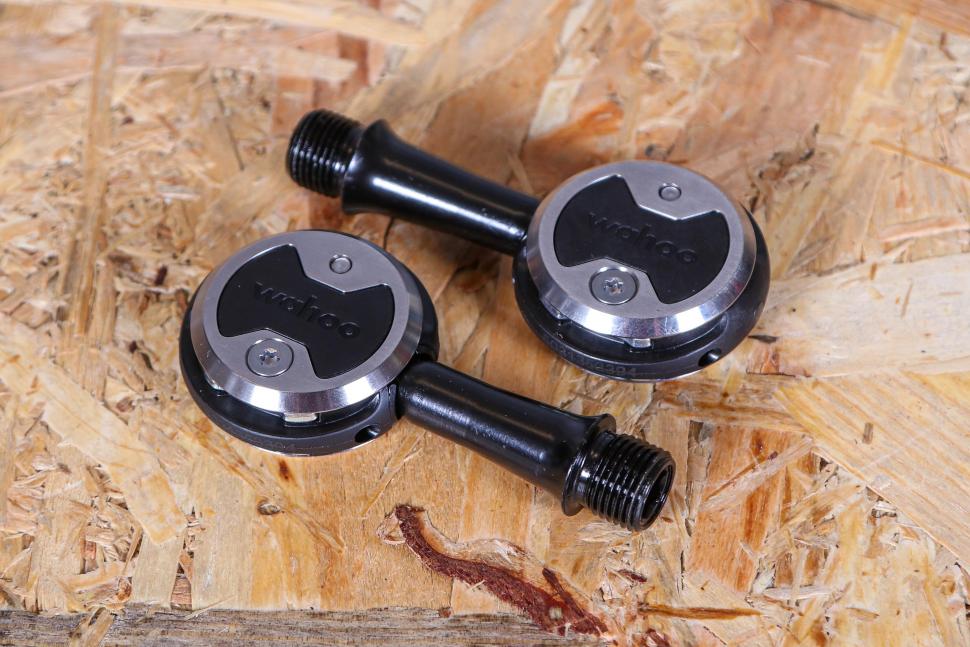 2022 Wahoo Speedplay Comp Pedals.jpg
2022 Wahoo Speedplay Comp Pedals.jpg£134.99
VERDICT:
Excellent pedals, and the best value way into the Speedplay system
Easy to walk with cleats
Low stack height
Huge adjustability
Double sided
Expensive replacement cleats
Cleats sensitive to dirt ingress
Pedal + cleat weight is higher than other systems at a similar price
Weight:
232g
Contact:
At road.cc every product is thoroughly tested for as long as it takes to get a proper insight into how well it works. Our reviewers are experienced cyclists that we trust to be objective. While we strive to ensure that opinions expressed are backed up by facts, reviews are by their nature an informed opinion, not a definitive verdict. We don't intentionally try to break anything (except locks) but we do try to look for weak points in any design. The overall score is not just an average of the other scores: it reflects both a product's function and value – with value determined by how a product compares with items of similar spec, quality, and price.
What the road.cc scores meanGood scores are more common than bad, because fortunately good products are more common than bad.
- Exceptional
- Excellent
- Very Good
- Good
- Quite good
- Average
- Not so good
- Poor
- Bad
- Appalling
The Wahoo Speedplay Comp Pedals are the most affordable in the Speedplay range, using a heavier chromoly axle to save cost but gaining 10g over a set of the £65-more Zeros. They still offer a huge range of adjustability, are easy to walk in and are double sided, but the cleats are sensitive to dirt ingress and expensive to replace. These ship with a set of 'easy tension' cleats rather than the 'standard' version, which lighter riders in particular will find much easier to clip in with.
The Wahoo takeover of Speedplay has resulted in a slight rejigging of nomenclature, with the five sets of pedals now being called the Comp, Zero, Aero, Nano, and Powrlink Zero, with the latter being available in either single or double-sided power meter form.
> Find your nearest dealer here
The Comp sits at the bottom of the range, with a chromoly spindle as opposed to stainless steel or titanium, as used on the more expensive options. This leads to the largest aesthetic difference, with the Comps' spindles being black as opposed to silver on all the others. It also results in a claimed weight of 232g for the pair, which we found to be bang on with the road.cc Scales of Truth. Unlike the 168g Nanos, the Comp pedals do not have a rider upper weight limit, so nothing to worry about there.
If light weight is a high priority then it is worth considering that a Speedplay cleat weighs 81.5g, significantly heavier than Shimano (32g with fastenings) or Look (48g with fastenings). This means the Speedplay's total system weight (395g) is heavier than a set of Look Keo Blade Carbon pedals (236+96=332g) or Ultegra R8000 pedals (248+312g), though the Ultegras are more expensive at RRP, £159.99, while the Keo Blades are slightly cheaper, £125.
Cleats
As with nearly all pedals, you get a set of cleats included in the box. In this case it's a set of 'easy tension' cleats as opposed to the 'standard tension' cleats that come with all the other pedals in the Speedplay range.
Lighter riders and anyone new to using clipless pedals may find these preferable as it requires a smaller force to clip both in and out; heavier riders and sprinters will be glad to know that the Comp pedals are also compatible with the standard tension cleats, which can be bought separately for £49.99.
Using the easy tension cleats proved little issue, and after more than 1,000km I haven't accidentally unclipped at any point. More noticeable is the clipping in – the standard ones really need standing on whereas these will do it under the force of the first pedal stroke.
> Buyer’s Guide: 7 of the best high-performance lightweight clipless pedals
Wahoo says the cleats should last between 3,000 and 5,000 miles before needing replacing, which is similar to how long Look and Shimano cleats last in my experience. Those are half the price, though.
Cleat setup
Setting up the cleats does take a little longer than others, but this doesn't need doing very often. It's worth getting right, though!
For anyone bar a few riders with four-bolt shoes, you will first need to install the three-bolt plate with changeable inserts that allow the plate to sit flat against the bottom of just about every three-bolt shoe out there. The four-bolt cleat system is then mounted to this to provide smaller adjustments to both the fore and aft position and left/right position to suit your preference. All of this is achieved with a hex key, which is a welcome update from the pre-Wahoo days when it required a small toolbox.
The three-to-four-bolt adaptor increases the stack height of the pedal system to 11.5mm (from 8.4mm), but that's still less than Look or Shimano SPD-SL systems. This is generally regarded as advantageous as it means your foot sits closer to the axle and uses less muscle to stabilise the foot. Wahoo claims that this allows more efficient power delivery; I can't back that up with any proof but I don't think a low stack is ever going to have a negative impact.
It is then possible to change the float and release angle. The total float is adjustable between 0 and 15 degrees, which gives a huge range to suit a wide variety of riders, without the need to switch cleats as with other systems. Make sure you do this with a suitably small crosshead screwdriver, as I know plenty of people who have rounded these screws off by using the wrong tools.
> When should you get new cleats?
One notable point about using the float is that it is icy smooth, with none of the resistance that you get from classic cleat systems. This can be unnerving at first, but you do soon get used to it.
Once this is all set up, you can add the walking cover.
Clipping in and out of the pedals does take a bit more practice than with Look or Shimano designs, as you have to line the cleat and pedal up perfectly and then push straight down rather than sliding your foot forwards as with other systems. To begin with this was taking me a few attempts, but as with everything, practice makes perfect and after a few weeks it felt natural and perhaps even easier because the pedals are double sided, so you can clip in either side.
Adjustability
One of the main appeals of Speedplay pedals has always been the huge degree of adjustability. The cleats have 13mm of fore-aft adjustment, which is more than most other brands, and there's 6mm of left-right adjustment, which is fairly typical. The fact that the mechanism is in the cleats does mean they're quite sizeable things, but because of the smooth shape they're not actually that bad to walk in – just stay off the beach and soft mud because that will require quite a thorough clean with a toothbrush if you ever want them to work the same again.
Another draw of the Speedplay system is the cornering clearance thanks to the diminutive dimensions of the lollipop. Wahoo claims a cornering angle of 39 degrees, which should help prevent pedal strikes when pedalling around corners. This will be particularly useful for criterium racers, and is significantly more than the 33 degrees of the Ultegra R8000 pedals or 35 degrees of the Dura-Ace R9100s.
During the testing period of about 10 weeks, which has included pretty wintry conditions, I've racked up over 3,000km on the Speedplays and they're still turning like new. Obviously, this is to be expected with any set of decent pedals, but I've had some that have gone gritty sooner. Durability has been a big focus of Wahoo, doing away with the grease ports and instead triple sealing the needle and cartridge bearings inside.
So far this seems to have paid off, and when they do get a bit tired it does appear they can be opened up.
Value
Comparing these with pedals we've tested recently, the Speedplays stack up about middle ground in terms of price. You could get a set of Look Keo 2 Max Carbons for less (£95), and although those initially look heavier, as with the comparisons I made earlier, the weight when combined with cleats is actually less (346g vs 395g). However, in my experience I've found the durability and build quality of the Speedplays to be superior. From Shimano, the Ultegra R8000 pedals have an RRP of £159.99 but are lighter, as mentioned earlier, though you don't get the benefits of them being double-sided or as easy to walk in.
> 7 of the best high-performance lightweight clipless pedals
It's hard to draw direct price comparisons as each pedal system brings its own advantages and disadvantages; if weight is the only factor then the Speedplay Comps get beaten, but even looking higher up the Look and Shimano trees, the Keo Blades or Dura-Ace R9100s can't offer the same corner clearance angles or adjustability.
So, at £134.99 the Comp pedals aren't cheap for the 'entry-level' offering, but they don't sacrifice a lot in terms of performance, weighing in just 10g more than a pair of Speedplay Zeros we tested last year, despite costing £65 less. The Comps are definitely the best value way to get on board the Speedplay train – whether you want to is a different question entirely. If you are looking for exceptional adjustability and low stack height then these are great, but unlike the Look and Shimano rivals, it's unlikely you'll find these at much below RRP.
> 10 of the best clipless pedals — click in from as little as £30
Overall, the Comps are an excellent set of pedals and the best value in the Speedplay range. If you're craving low stack height and prepared to take the time setting them up then they offer more adjustability than other pedal systems, and even though you might have to pay more for them than pedal and cleat systems of a similar weight, I'd say for many riders they're more than worth it.
Verdict
Excellent pedals, and the best value way into the Speedplay system
road.cc test report
Make and model: Wahoo Speedplay Comp Pedals
Size tested: n/a
Tell us what the product is for and who it's aimed at. What do the manufacturers say about it? How does that compare to your own feelings about it?
Wahoo says: "The exceptional comfort and versatility of the SPEEDPLAY COMP chromoly double sided bike pedal derives from its confidence-inspiring and stable platform, offering both value and performance mile after mile for cyclists of all levels, from beginners to advanced. Precise engagement, easy clip in, effortless release, and dual-sided entry with the Easy Tension Cleat deliver ease of use and confidence to the rider."
I was impressed with the performance of the Comps and they sacrifice very little over the significantly more expensive Speedplay pedals. That means you get decent durability, low stack height and loads of adjustability, and the easy tension cleat worked well. The expense will still be hard to justify for some riders when lighter systems can be found for less, though.
Tell us some more about the technical aspects of the product?
Wahoo lists:
Physical Dimensions: 3.9" x 2" x 2"
Shipping Weight: 1.25lb
Box Dimensions: 5.9" x 2" x 3.9"
Country of Origin: Vietnam
Weight: 232g per pair
Stack Height: 11.5mm (3 hole) 8.5 (4 hole)
Q Factor: 53mm
Body Material: Grivory
Spindle Material: Chromoly
Bearing Type: Triple Sealed Cartridge & Needle Bearings
Cornering Clearance: 39°
Max Rider Weight: No restriction
Cleats: Easy Tension Included
Release Angle: Micro Adjustable from 0° to 7.5°
Pedal Float: Adjustable from 0° to 15°
Cleat Fore - Aft Adjustability: Up to 13mm
Cleat Left - Right Adjustability: Up to 8mm
Walkable Cleat: Yes (adaptor included)
Rate the product for quality of construction:
9/10
Very well made pedals and cleats; a lot of thought seems to have gone into the durability of every part.
Rate the product for performance:
9/10
The same class-leading corner clearance angles, adjustability and low stack height as with other more expensive Speedplay pedals
Rate the product for durability:
8/10
The pedals are now sealed, which will improve durability; the cleats have a life expectancy of 3,000-5,000 miles, which is on a par with other market leaders.
Rate the product for weight (if applicable)
6/10
The pedals themselves are a competitive weight but I've been including the cleats in my comparisons as well, as this is where the mechanism is; including that makes them slightly heavier than pedals and cleats of a similar price.
Rate the product for comfort (if applicable)
10/10
These are the most adjustable pedal system on the market; if they're causing pain then it's the setup, and likely an easy fix by a professional.
Rate the product for value:
7/10
These are by some margin the cheapest Speedplay pedals and offer the same performance, features and build quality of their more expensive siblings. It is possible to find pedal systems from Look and Shimano that weigh the same for less, but the similarly priced Keo Blades (£125) and the more expensive Ultegra R8000s (£160) don't offer the same low stack height and masses of adjustability. Saying this, replacement cleats are expensive.
Tell us how the product performed overall when used for its designed purpose
Very well – the adjustable float is excellent, they appear durable and the low stack height does feel very good. The adjustability is also great for anyone who has an injury or specific fit demands.
Tell us what you particularly liked about the product
Being able to change float without swapping out cleats is a tidy idea and well executed.
Tell us what you particularly disliked about the product
Expensive replacement cleats.
How does the price compare to that of similar products in the market, including ones recently tested on road.cc?
As mentioned in the review, they're expensive compared with others if you go by weight, when you include the cleats, but they bring other benefits such as lowest stack height and most adjustability. They're significantly cheaper than the Speedplay Zero pedals we tested last year, and only gain 10g.
Did you enjoy using the product? Yes
Would you consider buying the product? Yes
Would you recommend the product to a friend? Some
Use this box to explain your overall score
They offer huge amounts of adjustability, lower stack height than other pedal systems, and they now need much less maintenance than pre-Wahoo days. The supplied easy tension cleats also worked well but they're still not perfect, as walking on sand or mud proved an issue, and replacement cleats are expensive. If you want/need to take advantage of all that adjustability, they're an excellent product; if you don't, there are similar weight (pedal and cleat) alternatives for less.
About the tester
Age: 23
I usually ride: Specialized venge pro 2019 My best bike is:
I've been riding for: Under 5 years I ride: Every day I would class myself as: Expert
I regularly do the following types of riding: road racing, time trialling, cyclo cross, commuting, club rides, sportives, general fitness riding, mtb,
Jamie has been riding bikes since a tender age but really caught the bug for racing and reviewing whilst studying towards a master's in Mechanical engineering at Swansea University. Having graduated, he decided he really quite liked working with bikes and is now a full-time addition to the road.cc team. When not writing about tech news or working on the Youtube channel, you can still find him racing local crits trying to cling on to his cat 2 licence...and missing every break going...
Latest Comments
- HoarseMann 25 min 46 sec ago
BBC news article on this implies anyone cycling on the road, rather than using the cycle area, is riding incorrectly! ...
- PRSboy 36 min 17 sec ago
Good news indeed, and good luck to the team. ...
- Rendel Harris 37 min 30 sec ago
I'm thinking of the ideal civilisation where people are genuinely civilised, not sure anyone's got there yet. Remember how Gandhi responded when he...
- cyclisto 57 min 18 sec ago
-Ambulance boss: Revenue is dropping. -Ambulance driver: Leave it on me Boss, I have a plan.
- David9694 1 hour 35 min ago
Carnage on the school run as residents rush from homes to 'sound of scraping metal'...
- festina 1 hour 50 min ago
One thing that definitely doesn't hold up emergency vehicles is the volume of car traffic on the road or the autobesity of cars that has been going...
- bobrayner 1 hour 58 min ago
If your interest was piqued by using piercings to attach race numbers, you'll love this: https://www.youtube.com/watch?v=feVQXqvBZx0
- slc 2 hours 20 min ago
There is a modest scientific literature on cycling shoes. It is generally sceptical about the value of greater stiffness provided by say carbon...
- Jaijai 3 hours 9 min ago
This story on its own says that's not true ....









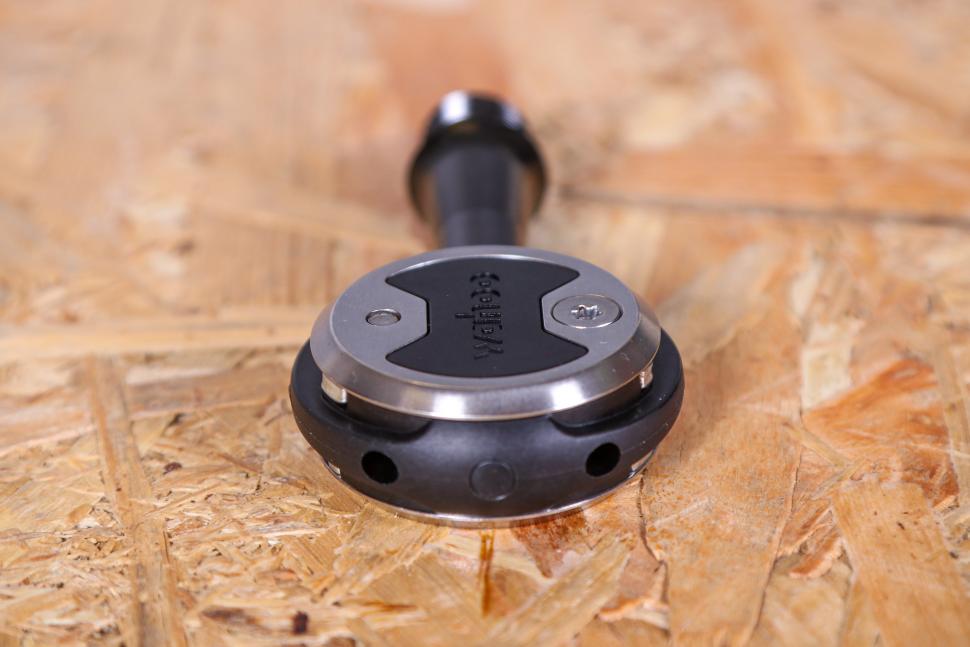
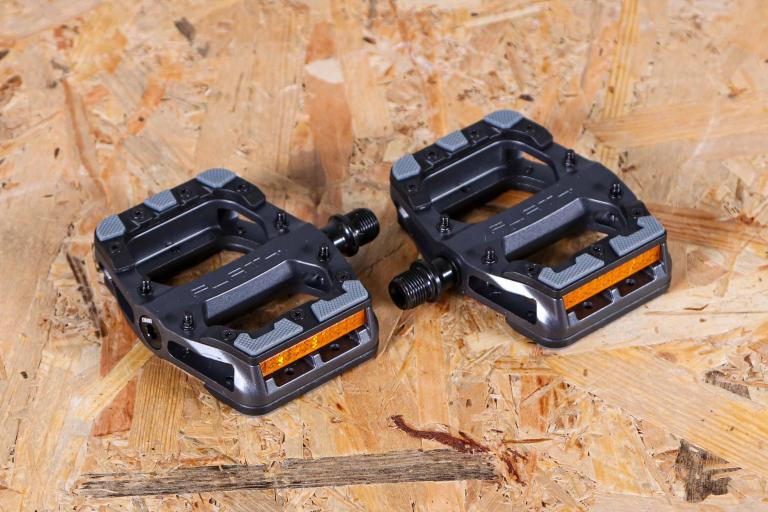
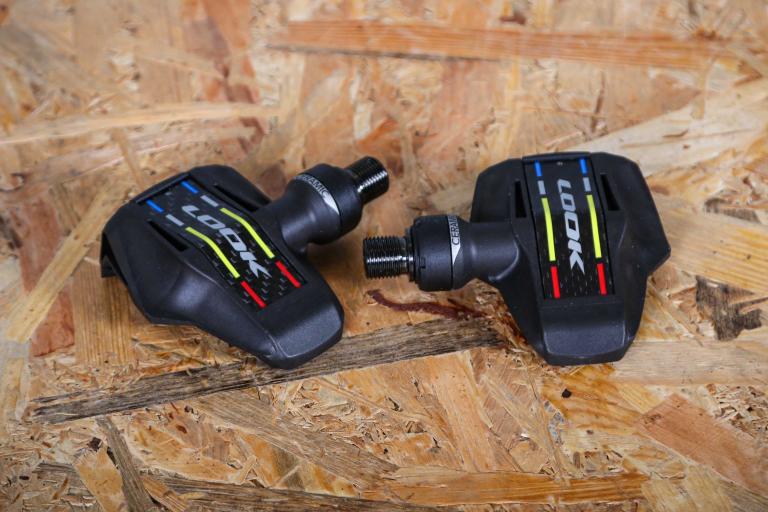
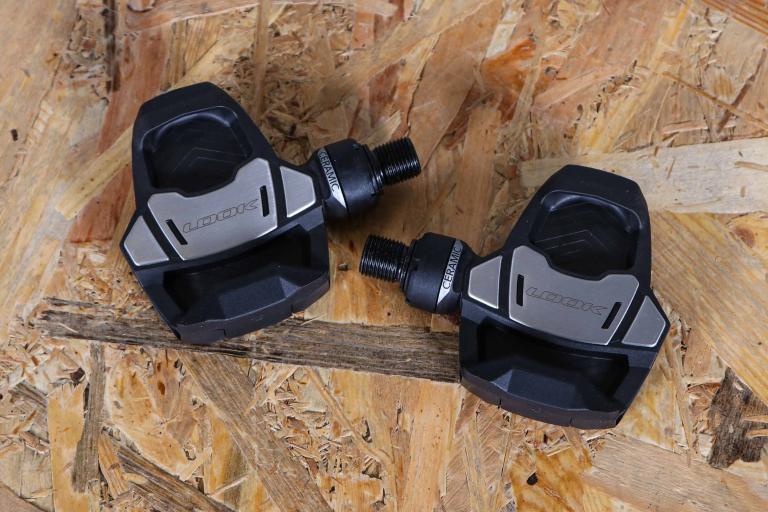
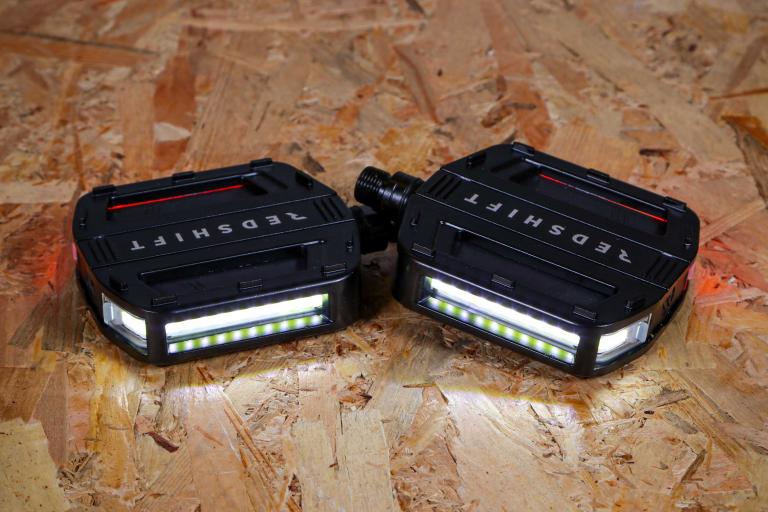
Add new comment
1 comments
Slight extra faff to set up and the standard cleats do take a bit of unexpected breaking in but it's worth it for the double sided nature alone.
also helped with some knee/IT band problems I had (though technically, this sort of thing should be solved with a better bike fit)
Wouldnt go back to single sided pedals